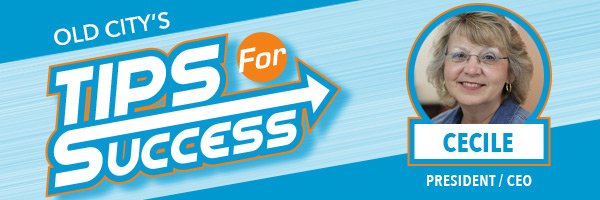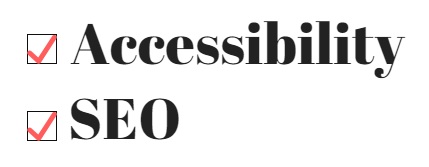Websites are a marketing piece that consumers use to learn about products and services. But, what if your website isn’t accessible to everyone? For example, what if your website isn’t user-friendly to American’s with disabilities that use screen readers to navigate the internet? Although many businesses are not in spaces that require ADA compliant websites, SEO and accessibility are imperative for every website.
Optimizing your images, videos, and other non-text elements for screen readers is a sure way to make your website more accessible. But, many times the way you optimize for a screen reader can conflict with the way you optimize for search engines. So, we’ve devised a list of do’s and don’ts to help you navigate improving the accessibility of your images, videos, and non-text elements without compromising SEO.
Do This
- Do write alt attributes for people and not just for search engine robots. This way, when a person using a screen reader visits your site, the description of the image makes sense. See Figure 1's caption for an example.

Figure 1: An appropriate alt attribute for this photo is, "A photo of a tan french bulldog laying down." This is a good alt attribute because it is short and accurately describes the image.
- Do keep alt attributes short, sweet, and to the point. If you have a detailed photo and would like to add more information put it in a caption or in the body text. Most screen readers are programmed to read up to 125 characters in an alt attribute.
- Do use the word "null" for decorative images. A decorative image is an image that doesn't make the content of a website richer; it serves solely as a decoration. "Null" signifies to screen readers and search engines that the image isn't crucial and it can safely be ignored.
- Do use terms like "Figure 1:", "Image 1:", or "Illustration 1:" to describe the image you are captioning if you have many images on a single page. This way, persons using assistive technology will know exactly which image you are referring to.
- Do provide full transcripts for videos and audio. This is twofold as it assists those using screen readers and helps search engines understand the content of non-text elements.
Confused about the "do's" above? No problem, give us a call and we'll explain them to you.
Do Not Do This
- Do not use an alt attribute for an image with a link attached if there is anchor text near the image with the same link attached. Screen readers will read the anchor text and alt attribute for the image, so it will sound repetitive and weird. Instead, use "null" as the alt attribute for your image. From an SEO perspective, it isn't ideal to skip an alt attribute for an image you'd like to appear in search engine results. In this case, we recommend attaching the link to the anchor text and not the image, this way you can optimize the image by adding the appropriate alt attribute.

Figure 2: An example of a text graphic.
- Do not use an alt attribute if you've used a caption unless you enter completely different text in each. Screen readers will read both the caption and alt attribute for images, videos, and other non-text elements; it will sound repetitive if you use similar descriptions.
- Do not try to convey the information from your infographic in an alt attribute. Screen readers aren't programmed to read long alt attributes. In the same respect, it is important that a person using a screen reader has access to the information from the infographic. Be sure to describe your infographic in the text of the body or in a caption.
- Do not use text-graphics when possible, unless it is for your logo. Instead, write the text out and find a more appropriate image.
If you need help with SEO or the accessibility of your website, contact us!

Tip for Success - Backing Up Your Files
We often hear about the importance of securing personal information to keep it safe from hackers. But, it is just as important to secure your business information. The heightened threat of ransomware, hackers, and phishing emails all point to one thing: it is critical to make good backups for your business files.
Additionally, it won’t cost you a lot of money. In fact, it will save you money in the long run because not getting hacked means you can avoid paying to fix computers when your computer has been hacked and someone is holding your files hostage. If you are a small business, like us, you can purchase external storage devices to back up your files on. But remember, after backing up you must remove the device from your computer.
Backing up is also helpful during this time of the year when hurricanes are brewing, and you may not have the space to take all your office computers with you. It is easy to pack a one, two, or three terabyte external storage device and off you go! It will save you time and money!
Mission Statement
Our mission at Old City Web Services is to navigate the world of web design, web development, and advertising for our clients so that they can focus on what they do best – running their business! Our business intentions go beyond the metrics of graphics, coding, and SEO. Located on Florida’s First Coast, we run a personable home front service and consider our relationship with our clients as a partnership in their success. If you are looking to increase your business’ visibility give us a call at 904-867-4112 or contact us today.
Sharing and re-posting this blog is encouraged. Please credit Old City Web Services when sharing. Disclaimer: Every effort is made to ensure the accuracy of information on Old City Web Services Blog. Photo credits: Old City Web Services.




